
The Optical Society (OSA) is a professional association of individuals and companies with an interest in optics and photonics. It publishes journals, and organizes conferences and exhibitions. In 2019 it had about 22,000 members in more than 100 countries, including some 300 companies.

Photonic-crystal fiber (PCF) is a class of optical fiber based on the properties of photonic crystals. It was first explored in 1996 at University of Bath, UK. Because of its ability to confine light in hollow cores or with confinement characteristics not possible in conventional optical fiber, PCF is now finding applications in fiber-optic communications, fiber lasers, nonlinear devices, high-power transmission, highly sensitive gas sensors, and other areas. More specific categories of PCF include photonic-bandgap fiber, holey fiber, hole-assisted fiber, and Bragg fiber. Photonic crystal fibers may be considered a subgroup of a more general class of microstructured optical fibers, where light is guided by structural modifications, and not only by refractive index differences.
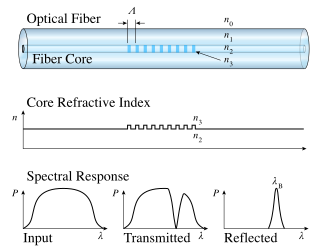
A fiber Bragg grating (FBG) is a type of distributed Bragg reflector constructed in a short segment of optical fiber that reflects particular wavelengths of light and transmits all others. This is achieved by creating a periodic variation in the refractive index of the fiber core, which generates a wavelength-specific dielectric mirror.Hence a fiber Bragg grating can be used as an inline optical fiber to block certain wavelengths or it can be used as wavelength-specific reflector.
Sir David Neil Payne CBE FRS FREng is a British professor of photonics who is director of the Optoelectronics Research Centre at the University of Southampton. He has made several contributions in areas of optical fibre communications over the last fifty years and his work has affected telecommunications and laser technology. Payne’s work spans diverse areas of photonics, from telecommunications and optical sensors to nanophotonics and optical materials, including the introduction of the first optical fibre drawing tower in a university.
Plastic optical fiber (POF) or polymer optical fiber is an optical fiber that is made out of polymer. Similar to glass optical fiber, POF transmits light through the core of the fiber. Its chief advantage over the glass product, other aspect being equal, is its robustness under bending and stretching.
Philip St. John Russell, FRS, is a Director of the Max Planck Institute for the Science of Light in Erlangen, Germany. His area of research is "photonics and new materials".
A fiber laser is a laser in which the active gain medium is an optical fiber doped with rare-earth elements such as erbium, ytterbium, neodymium, dysprosium, praseodymium, thulium and holmium. They are related to doped fiber amplifiers, which provide light amplification without lasing. Fiber nonlinearities, such as stimulated Raman scattering or four-wave mixing can also provide gain and thus serve as gain media for a fiber laser.
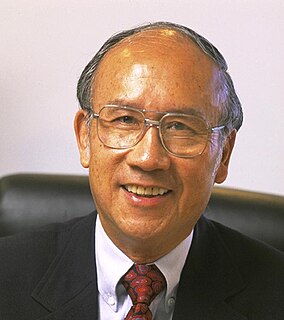
Tingye Li was a Chinese-American scientist in the fields of microwaves, lasers and optical communications. His innovative work at AT&T pioneered the research and application of lightwave communication, and has had a far-reaching impact on information technology for over four decades.
The John Tyndall Award is given to the "individual who has made pioneering, highly significant, or continuing technical or leadership contributions to fiber optics technology". The award is named after John Tyndall (1820-1893), who demonstrated for the first time internal reflection.
Stewart David Personick is an American researcher in telecommunications and computer networking. He worked at Bell Labs, TRW, and Bellcore, researching optical fiber receiver design, propagation in multi-mode optical fibers, time-domain reflectometry, and the end-to-end modeling of fiber-optic communication systems.
Chiral Photonics, Inc. is a photonics company based in Pine Brook, New Jersey, founded in 1999. The company is developing a new class of optical devices based on twisting glass optical fibers. These in-fiber devices aim to displace discrete optical elements such as lasers, filters and sensors. They benefit from optical fiber’s transmission efficiency, robustness and ease of integration.
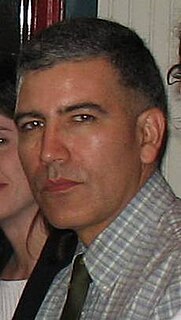
Francisco Javier "Frank" Duarte is a laser physicist and author/editor of several well-known books on tunable lasers and quantum optics. He introduced the generalized multiple-prism dispersion theory, has discovered various multiple-prism grating oscillator laser configurations, and pioneered polymer-nanoparticle gain media. His contributions have found applications in a variety of fields including astronomical instrumentation, atomic vapor laser isotope separation, geodesics, gravitational lensing, laser medicine, laser microscopy, laser pulse compression, laser spectroscopy, nonlinear optics, and tunable diode lasers.
The IEEE Photonics Society, formerly the IEEE Lasers and Electro-Optics Society (LEOS), is a society of the Institute of Electrical and Electronics Engineers (IEEE), focused on the scientific and engineering knowledge about the field of quantum electronics. In the hierarchy of IEEE, the Photonics Society is one of the close to 40 technical societies organized under the IEEE Technical Activities Board.
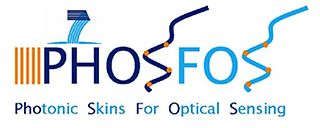
PhoSFOS is a research and technology development project co-funded by the European Commission.

Benjamin John Eggleton FAA, FTSE, FOSA, FIEEE is the Director of The University of Sydney Nano Institute. He also currently serves as Co-Director of the NSW Smart Sensing Network (NSSN).
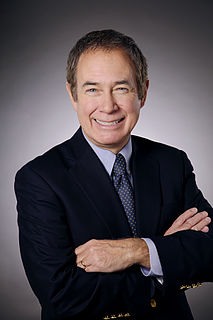
Paul R. Prucnal is a Professor of Electrical Engineering at Princeton University. He is best known for his seminal work in Neuromorphic Photonics, optical code division multiple access (OCDMA) and the invention of the terahertz optical asymmetric demultiplexor (TOAD). He is currently a fellow of IEEE, Optical Society of America and National Academy of Inventors.
David F. Welch, Ph.D, is an American businessman and research scientist. Welch is a pioneer in the field of optical devices and optical transport systems for telecommunications networks. Welch first made it possible to commercially deploy reliable 980 nm laser pumps, needed in low noise optical amplifiers employed in dense wavelength division multiplexing (DWDM) telecommunications systems. He also achieved the first commercial optoelectronics integrated circuit, several years ahead of any competing research or developments laboratory.
Manijeh Razeghi is an Iranian-American scientist in the fields of semiconductors and optoelectronic devices. She is a pioneer in modern epitaxial techniques for semiconductors such as low pressure metalorganic chemical vapor deposition (MOCVD), vapor phase epitaxy (VPE), molecular beam epitaxy (MBE), GasMBE, and MOMBE. These techniques have enabled the development of semiconductor devices and quantum structures with higher composition consistency and reliability, leading to major advancement in InP and GaAs based quantum photonics and electronic devices, which were at the core of the late 20th century optical fiber telecommunications and early information technology.
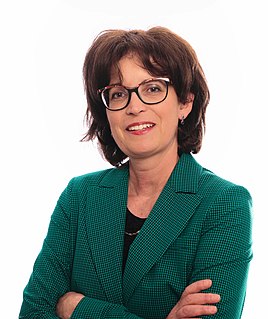
Sophie LaRochelle is a Canada Research Chair and professor of engineering at the Université Laval. She specializes in developing fiber optic components for signal-processing and data transmission in telecommunication networks.
Satya Prasad Majumder is a Bangladeshi academic. He is the current and the 14th Vice-chancellor of Bangladesh University of Engineering and Technology (BUET).









